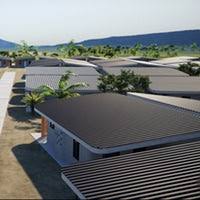
Breaking News
 Tennessee Sues Roblox, Says Game is a 'Gateway for Predators' Targeting Children
Tennessee Sues Roblox, Says Game is a 'Gateway for Predators' Targeting Children
 Kushner and Witkoff Reportedly Draft $112B Plan to Turn Gaza Into 'Smart City'...
Kushner and Witkoff Reportedly Draft $112B Plan to Turn Gaza Into 'Smart City'...
 Christmas in Venezuela: What It Was Like After Socialism Destroyed the Country
Christmas in Venezuela: What It Was Like After Socialism Destroyed the Country
 Can AI Build Your Home? | From #460 Ryan Fink & Ty Frackiewicz | The Way I Heard It
Can AI Build Your Home? | From #460 Ryan Fink & Ty Frackiewicz | The Way I Heard It
Top Tech News
 Perfect Aircrete, Kitchen Ingredients.
Perfect Aircrete, Kitchen Ingredients.
 Futuristic pixel-raising display lets you feel what's onscreen
Futuristic pixel-raising display lets you feel what's onscreen
 Cutting-Edge Facility Generates Pure Water and Hydrogen Fuel from Seawater for Mere Pennies
Cutting-Edge Facility Generates Pure Water and Hydrogen Fuel from Seawater for Mere Pennies
 This tiny dev board is packed with features for ambitious makers
This tiny dev board is packed with features for ambitious makers
 Scientists Discover Gel to Regrow Tooth Enamel
Scientists Discover Gel to Regrow Tooth Enamel
 Vitamin C and Dandelion Root Killing Cancer Cells -- as Former CDC Director Calls for COVID-19...
Vitamin C and Dandelion Root Killing Cancer Cells -- as Former CDC Director Calls for COVID-19...
 Galactic Brain: US firm plans space-based data centers, power grid to challenge China
Galactic Brain: US firm plans space-based data centers, power grid to challenge China
 A microbial cleanup for glyphosate just earned a patent. Here's why that matters
A microbial cleanup for glyphosate just earned a patent. Here's why that matters
 Japan Breaks Internet Speed Record with 5 Million Times Faster Data Transfer
Japan Breaks Internet Speed Record with 5 Million Times Faster Data Transfer
Construction to kick off on world's first 3D-printed neighborhood

Set to take shape in Latin America, the cluster of homes is designed for families living on less than US$200 a month, and will ideally serve as proof of concept for low-cost housing solutions around the world.
The project is a joint initiative from non-profit New Story, Yves Béhar's design firm Fuseproject and construction technology company Icon to provide housing solutions for the homeless. At the SXSW festival in Texas last year, the team revealed an impressive example of how this vision might take shape, showing off a full-sized proof of concept model of a 350 sq ft (32 sq m) home.
The use of 3D printing in architecture has taken significant steps forward of late. We've seen the technology put to use to construct offices, a castle and even 10 houses in 24 hours by one particularly ambitious Chinese firm. While there will be variations in how it is tuned to these different projects, generally speaking, large 3D printers for construction extrude a mortar through the nozzle in programmed patterns, layer by layer, until the basic structure of the building is formed.

 Advanced Propulsion Resources Part 1 of 2
Advanced Propulsion Resources Part 1 of 2

